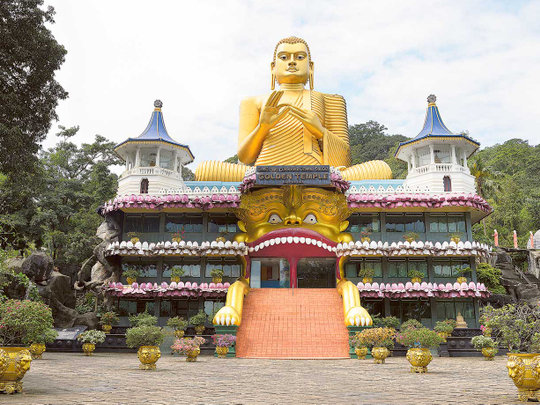
New Delhi: The UN’s cultural agency has denied reports it is considering taking an ancient Sri Lankan cave temple off a list of world heritage sites, as a local conservation official on Saturday renewed fears about its status.
On a visit to the island last week, Unesco Director-General Irina Bokova told reporters she had raised concerns over the maintenance of the Golden Temple of Dambulla with local authorities.
However, Bokova’s office later stressed she did not say the centuries-old monastery risked being removed from the list of World Heritage Sites, but rather that Unesco is in dialogue with Sri Lankan authorities over the temple’s condition.
“The Office of the Director-General reiterates that the organisation is engaged in a process of dialogue with national authorities on this matter, and that no reference was ever made to its delisting as a World Heritage Site,” the statement released on Thursday said.
Sri Lanka’s top official in charge of heritage conservation told AFP on Saturday he believed the Dambulla temple was in fact in danger of being removed from the list owing to decades of neglect.
“The temple risks losing the World Heritage status for two reasons. One is the new constructions that have been added and the second is the damage to murals and the failure to conserve them,” Prishanta Gunawardhana, the head of the government’s Central Cultural Fund, told AFP.
A resident monk had for more than two decades denied conservation officials full access to the temple but a recent change of chief priest had given authorities hope the decline could be stopped, Gunawardhana said.
“This is a national tragedy. We will take at least five months to assess the damage caused by years of neglect,” Gunawardhana said.
The first site to be removed from Unesco’s World Heritage List was the Arabian Oryx Sanctuary in Oman in 2007 after the government decided to reduce the size of the protected area by 90 per cent — in contravention of the heritage convention.
The only other site to be removed was Germany’s Dresden Elbe valley due to the building of a four-lane bridge in the heart of the cultural landscape which meant that the property failed to keep its “outstanding universal value as inscribed”.










